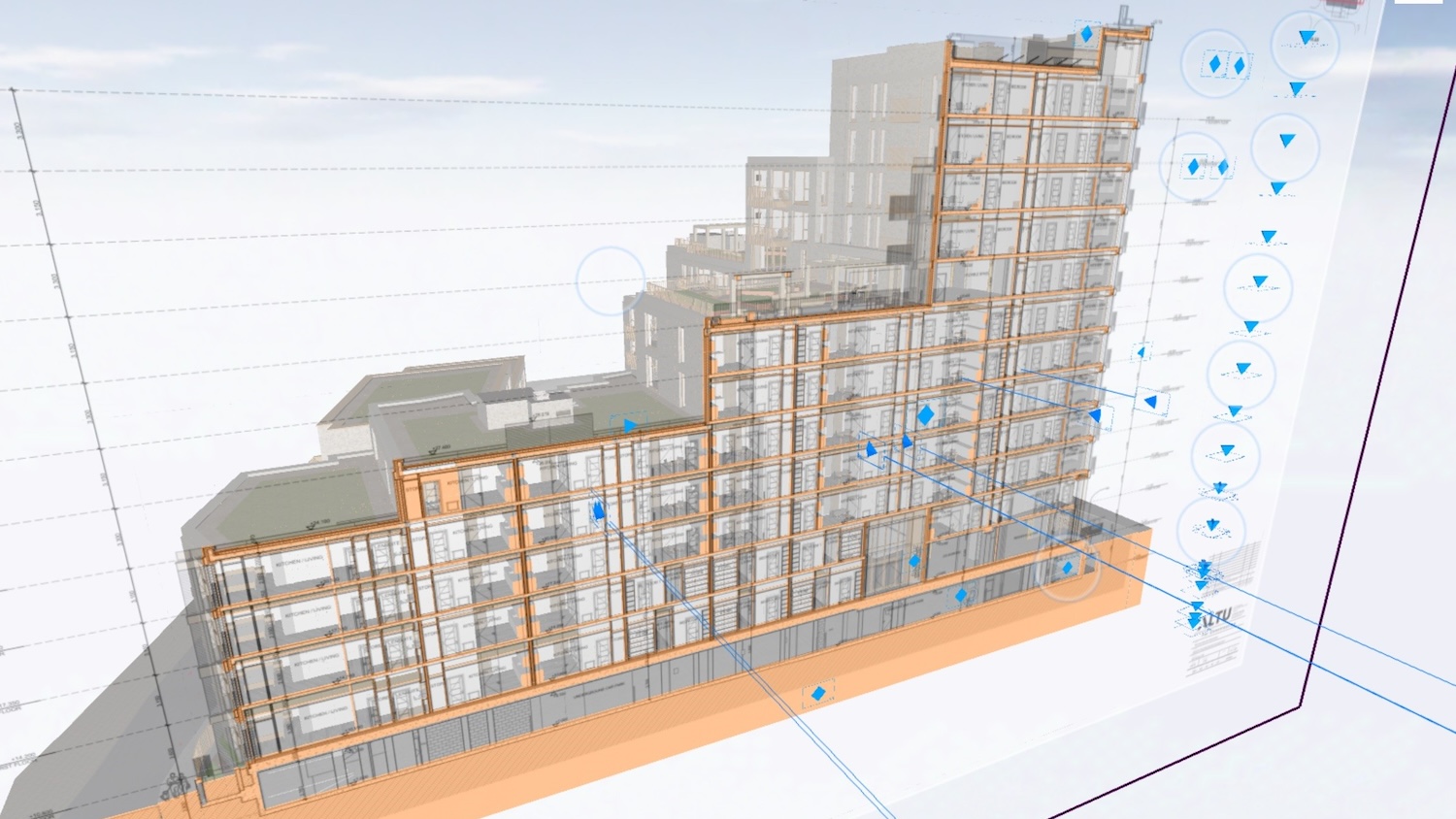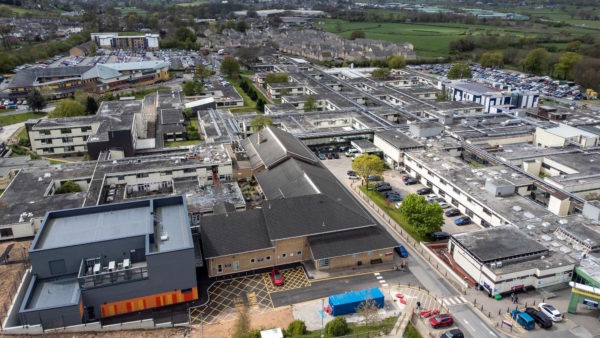
Altu Architects and Elliott Group worked together to deliver the Eglinton Place residential scheme in Dublin, with Archicad and BIMx driving their digital collaboration.
Situated on a busy corner site in the popular suburb of Donnybrook Village in Dublin, Eglinton Place is a high-density, build-to-rent residential scheme at the gateway to the city.
Completed in May, the development includes 148 one-, two- and three-bedroom homes, including nine duplex units, plus shared amenity facilities and spaces.
Dublin-based Altu Architects joined the project for the construction phase to work with contractor Elliott Group and client Richmond Homes in bringing the ambitious design to life.
Eglinton Place
Client: Richmond Homes
Architect/designer: Altu Architects
Main contractor: Elliott Group
Altu associate director Michael Harty joined the project eight months in and needed to quickly get up to speed with the complex design.
He explains: “This was a highly complex project. The BIMx model that we exported directly from Archicad was invaluable, both in gaining a thorough understanding of the design at the start, and to address any challenges and queries throughout the project.”
Every small detail
The building varies in height from three to four storeys along Brookvale Road, five to 12 storeys along Donnybrook Road, and four to 12 storeys along Eglinton Road. This complex multi-level design ensures respect for the neighbouring residential context, while bringing light into the internal courtyard.

“Where there were aspects where the builder needed clarification, we used BIMx to zoom into different views and angles.”
Moreover, the design uses well-placed balconies and sloping facades with feature brick and stone cladding. These sit alongside distinctive anodised metal doors, windows and balconies to create a striking yet sympathetic addition to the busy urban village.
The elevation onto Brookvale Road includes a projecting steel frame with vertical fins, adding an eye-catching architectural element.
Harty explains: “We modelled every small detail of the design in Archicad and shared it with the contractors on site using BIMx.
“The combination of Archicad and BIMx was invaluable in ensuring the high quality of the finished design. Where there were aspects where the builder needed clarification, we used BIMx to zoom into different views and angles.”
Supply chain collaboration

The complexity of the project required collaboration with a large number of subcontractors, from structural engineers to acoustic consultants, facade specialists and landscape designers.
Altu took the structural engineers’ Revit model and drawings from the other subcontractors to incorporate them into the Archicad model, before sharing the federated model with the builder. This allowed the team to identify and fix any clashes in the model environment.
Dean Stone, senior project manager for main contractor Elliott Group, says: “This was the first time we had used BIMx. We were very impressed. Being able to access the BIMx file via the web without any additional software was invaluable. It meant we could share a link via email with third parties and they could access the model immediately.
“In site meetings, we projected the BIMx model onto a large screen and were able to pan around the site and zoom into individual areas in real-time. In this way, we could talk through the project and discuss any issues straight away. It’s much easier to do this in 3D.”
Clarification requests
Due to the project’s complexity, there was a large volume of requests for clarification issued to the design team. The Archicad model’s detail, coupled with the easy visualisation and mark-up in BIMx, was key in responding to the queries.
Moreover, the team was able to deal with clashes on site as they arose. For example, where there was a clash with a soffit, they could mark it on BIMx and find a workaround.
“Using BIMx on site on a tablet, it’s easy to pick up the detail you need in the exact location you want as the building is being constructed,” says Harty. “And with immediate access to all the drawings, it is much easier to find what you’re looking for.”
Stone adds: “With BIMx, we were able to resolve any on-site issues much more quickly, keeping the project on track. We’d definitely use BIMx again on future projects.”
Don’t miss out on BIM and digital construction news: sign up to receive the BIMplus newsletter.











